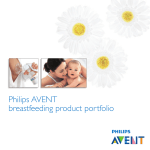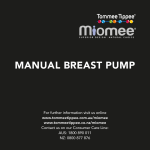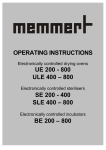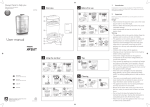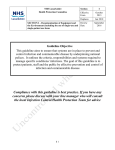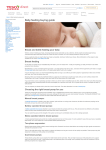Download 10) Non Surgical Lasers/IPLS a) The licence holder shall employ the
Transcript
10) Non Surgical Lasers/IPLS a) The licence holder shall employ the services of an Expert Medical Practitioner to produce the ‘treatment protocol’ document which shall be kept on site. (Appendix C outlines the information required in this document) b) The Licence holder shall employ the services of a certificated Laser Protection Advisor who will assist in the production of the ‘local rules’ document (A specimen laser local rules document is attached as Appendix D). The ‘local rules ‘ shall be updated if there are any changes made to the equipment in use, changes in procedure or treatment room if these affect the safe use of the laser/IPL. c) All authorised users of laser/IPLS shall be trained to at least the Core of Knowledge Certificate level and records of such training shall be kept on site with the local rules. Any training on the specific equipment in use at the premises shall also be recorded. Such training should be refreshed every 3-5 years. d) A suitably qualified member of staff on the premises shall be identified as the laser protection supervisor they will have day to day to responsibility of ensuring the local rules are followed. e) A treatment register shall be completed every time the laser/IPLS is operated, including the following information: • • • • • • the name of the person treated (including a second means of identification); the date and time of treatment; the name and signature of the laser/IPLS operator; the nature of the laser/IPLS treatment given the treatment parameters any accidents or adverse effects. Laser/IPL Controlled Area f) The area around working lasers/IPLS shall be controlled to protect other persons while treatment is in progress. The controlled area shall be clearly defined and not used for other purposes. A suitable safety warning sign or light entry system which complies with current British Standards shall be in place on the door of the controlled area. g) All lasers/IPLS shall comply with current standards (BS EN 606012-22 for medical lasers and BS 60601-2-57 and shall display labels identifying them, their wavelength or range of wavelengths and the maximum output power of the radiation emitted. The labels shall be clearly visible on the front or side of the machine. h) The door to the controlled area shall be fitted with a suitable device which can be operated from the outside in an emergency i) Any windows in the controlled area shall be fitted with opaque blinds approved by the LPA . i) The controlled areas shall be kept clear of clutter, mirrors shall be avoided and jewellery shall not be worn. k) Surfaces within the controlled area shall be of a matt or eggshell Finish. l) Protective eyewear shall be worn by everyone within the controlled area whenever there is a risk of exposure to laser/IPLS . All protective eyewear shall be marked with the wavelength range and protection offered as detailed in the local rules document. They shall be in a clean serviceable condition. m) The laser protection supervisor shall ensure that the key to any laser/IPLS equipment is kept in a secure and separate area when not in use and that only authorised users have access to the key. n) Lasers/IPLS shall be serviced annually and a record kept of servicing and repairs with the local rules document. APPENDIX A CERTIFICATION REQUIRED TO BE AVAILABLE AT THE LICENSED PREMISES 1) Electricity • 2) Sterilisers • 3) 4) • All applicants and licence holders shall hold a copy of the licence of the contractor who is removing the controlled waste. • Copies of transfer documents for the removal of controlled waste should also be held. Insurance A copy of the employers liability (where applicable) and public liability certificates should be available for inspection. Training • 6) All applicants and licence holders are required to hold valid documentation confirming the safety/calibration of all sterilisers which are used in connection with the business e.g. autoclaves, ultrasonic cleaners, ultra violet cabinets etc. All works must be carried out by a competent engineer. Controlled Waste • 5) All applicants and licence holders are required to hold valid documentation confirming the safety of the fixed wiring throughout the premises. All works must be carried out by a competent electrical engineer in accordance with the Electricity at Work Regulations 1989. e.g. NICEIC ‘Periodic Inspection Report For An Electrical Installation’. All certificates of qualification relevant to the licensed treatments shall be available for inspection. Fire Risk Assessment Where the Regulatory Reform (Fire Safety) Order 2005 applies to your premises you must carry out a FIRE RISK ASSESSMENT and make an EMERGENCY PLAN. APPENDIX C Laser /IPLS Treatment Protocol Document A treatment protocol must be produced by an expert medical practitioner (EMP) in relation to the licence holders equipment/premises. The treatment protocol sets out the necessary pre-treatment checks and tests, the manner in which the laser/IPLS is to be applied, the acceptable variations in the settings used, and when to abort a treatment. The treatment protocol should be signed and dated by the EMP to confirm authorisation, should be reviewed annually and include a projected date for review. A separate treatment protocol should be in place for each laser/IPLS in use at the licensed premises. The treatment protocol must include the following: • • • • • • • • • • • • name and technical specifications of the equipment contraindications treatment technique – general treatment technique – hair reduction client consent prior to treatment cleanliness and infection control pre-treatment tests post-treatment care recognition of treatment-related problems emergency procedures permitted variation on machine variables procedure in the event of equipment failure APPENDIX D CONTENT OF LASER/IPLS LOCAL RULES DOCUMENT 1) Potential Hazards List all types of hazards including fire, skin and eye injuries, electrical etc 2) Device Description Description of all devices including output, serial numbers etc.. 3) Treatment Protocol Reference to separate document produced by the Expert Medical Practitioner. 4) Written Procedures Supported by reference to user manual/training manual etc 5)Adverse Incident Procedure a) Details of actions that shall be taken in cases of emergency e.g. eye exposure b) Name, address and telephone number of local accident and emergency department. c) Any incidents must also be reported to Richmond Council, list of their contact details, 6) Emergency Shutdown Procedure Instructions as set down in manufacturer’s manual or treatment protocol. 7) Register of Authorised Users Details of trained personnel with signed declarations of individuals. 8) Laser Protection Advisor Contact details of the LPA 9) Laser Protection Supervisor a) One Authorised User shall be nominated Laser Protection Supervisor to ensure that the register is maintained and the local rules are adhered to b) Name of the laser protection supervisor 10) Record of laser use A register shall be kept which will separately record the following information every time the IPL is operated The name and date of birth of the person treated date of treatment the operator the treatment given any accident or adverse effects. 11) Laser/IPL Operator Training a)All laser/IPL ‘authorised users’ shall hold the Core of Knowledge Training Certificate together with specific training on the use of on site equipment provided by the supplier of the Laser/IPLS. b) Details of all training shall be recorded in the Register of Authorised Users or a separate Training Register. 12) Controlled Area designation and access a) The room in which the laser/IPLS is used shall be designated a ‘Controlled Area’ and the laser shall only be used in this area. Approved warning signs shall be fitted to the door i.e. ‘Controlled Area’, ‘Eye Protection’ etc b). A notice should be fixed to the laser/IPLS indicating that its use is subject to the Local rules. 13) Register of Authorised Users A register shall be kept of personnel authorised to operate the equipment. 14) Safe Operation of device a) No more than one laser/IPL shall be switched on during the client treatment. b). When the laser/IPL is in operation the number of persons in the room shall be kept to a minimum. c) The laser/IPL shall not be enabled to fire unless it is directed towards the treatment site or a beam stop. d) The Authorised User shall be careful to avoid reflections of the beam from Instruments/equipment in close proximity to the beam path, Matt/non reflective surfaces etc shall be provided. e). Whenever the device is unattended by an Authorised User, the laser shall be switched off and the key withdrawn and placed in safe custody by the Authorised User. 15) Operator responsibility a) It is the responsibility of the equipment Authorised User to be aware of the nature of the hazard involved and to be familiar with the manufacturer’s operating instructions. b) During the operation of the laser (or IPL) the Authorised User is responsible for the safety of all persons present, including the client and themselves. 16) Protective eyewear Protective eyewear shall be provided and clearly marked for the laser. It is important that the correct goggles are used e.g. the use of a coloured sticker or other identifier on the goggles matches a similar identifier on the laser of IPL. The Authorised User shall instruct all personnel in the Controlled Area to wear goggles suitable for the laser being used. 17) Application of local rules a). The laser shall only be used in accordance with these local rules. b). Authorised Persons shall sign statements that they have read and understood these local rules. c) The local rules shall be kept in the treatment room/s at all times.








